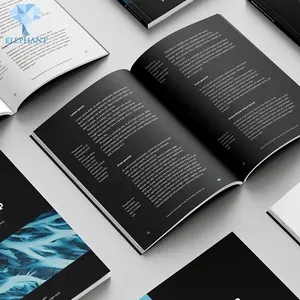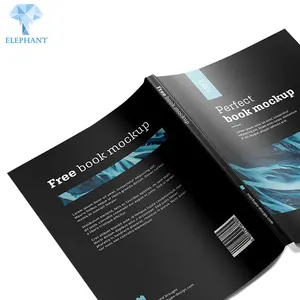
All categories
Featured selections
Trade Assurance
Buyer Central
Help Center
Get the app
Become a supplier

(1072 products available)
















































Vietnamese literature has a long and rich history, spanning centuries of cultural and artistic expression. Over the years, many different genres and styles have emerged, reflecting the unique experiences and perspectives of Vietnamese writers and poets. Traditional forms of storytelling, such as folk tales, continue to be passed down through generations, while modern narratives explore themes of love, family, history, and social issues. Poetry also holds a special place in Vietnamese literature, with many celebrated poets crafting verses that capture the beauty of the language and the depth of human emotions.
From classic works to contemporary pieces, Vietnamese literature offers a diverse range of voices and stories that showcase the country's rich literary heritage.
Children's books
The colorfully illustrated and simply told stories in these Vietnamese children's books are designed to teach young readers about Vietnamese culture, history, and values. Many feature fables and folk tales passed down through generations, often with morals similar to Aesop's. Others contain stories about family, friendship, and nature. They are a great way for children to learn the language through context clues.
Fiction and Literature
Novels and short stories from Vietnam often deal with themes of war, family, and identity. Some famous authors include Bao Ninh, whose novel "The Sorrow of War" tells a soldier's story from both sides of the Vietnam War, and Nguyen Huy Thiep, known for his modern short stories. Traditional tales like "The Legend of the Restored Sword" also fall under literature.
Poetry
Poems, especially those from the Vietnamese War, are an important part of Vietnamese literature. Many famous Vietnamese poets wrote about their experiences during the war, using powerful imagery and language to convey their feelings about the conflict. Poetry has a special place in Vietnamese culture, often being memorized and recited at family gatherings and celebrations.
History and Culture
Books about Vietnam's past and traditions can help readers better understand the country and its people. These include histories of the Vietnam War from the Vietnamese perspective, as well as overviews of important events, figures, and cultural practices. Other topics are Vietnamese cuisine, art, literature, and religion.
Self-Help and Religion
Vietnamese authors have written self-help books on topics like personal finance, health, and happiness. Many are based on Confucianism, Buddhism, and Taoism.
Vietnamese books can be enjoyed in different ways, depending on their kind. In the case of literature fiction, readers can take time to enjoy the story and the character's development. For poetry, readers can savor each poem and even read it aloud to appreciate the sound and rhythm. When it comes to language learning, learners should practice reading out loud to improve pronunciation and understanding. To fully enjoy Vietnamese cookbooks, readers should try out the recipes and enjoy the process of cooking. For children's books, reading with expression and enthusiasm brings the story to life for younger listeners.
Using bookmarks to mark favorite passages or interesting ideas enhances the reading experience. Joining or forming a book club is also a great way to share thoughts on the book and hear different perspectives.
Books from Vietnam are safe for reading and have been printed using non-toxic materials. The printing and binding processes use safe adhesives and chemicals. Reputable publishers adhere to strict safety standards, especially for children's books. These standards ensure that all materials used are free from harmful substances.
Additionally, books are regularly tested for safety to ensure they meet the required quality standards. When purchasing Vietnamese books, especially for children, it is important to look out for labels or certifications that indicate the book meets safety requirements. Also, avoid any books that have a strong chemical odor as they may contain excess chemicals that may pose a risk to safety.
Books written in Vietnamese have many functions and features that readers will enjoy. Below are some of them:
Q1. What genres do Vietnamese books cover?
Books in Vietnamese cover many genres. There are novels in romance, mystery, science fiction, fantasy, and historical fiction. Readers enjoy short stories, poetry, and literature from famous Vietnamese authors. Books on self-help, business, and personal development are also available.
Q2. Are there Vietnamese language learning books?
Yes. There are many books for those wanting to learn the Vietnamese language. They have basic phrases, vocabulary, and grammar rules. Some books are for beginners, while others are for advanced learners. Language learning books also include audio materials for listening and speaking practice.
Q3. Are there Vietnamese cookbooks?
There are many cookbooks in Vietnamese that show how to prepare traditional and modern Vietnamese dishes. They have detailed recipes, cooking methods, and pictures. Some books focus on Vietnamese street food, while others show how to make seasonal and festive dishes.
Q4. Do Vietnamese books have English translations?
Some books have English translations. Bilingual books have English and Vietnamese versions side by side. This is helpful for language learners and readers who want to understand the content in both languages.
Q5. Are there any Vietnamese books on history and culture?
Yes. There are many books that talk about Vietnam's history, culture, traditions, and customs. They cover important historical events, biographies of famous Vietnamese people, and stories about cultural heritage. This information is useful for people doing research and readers who want to learn more about Vietnam.